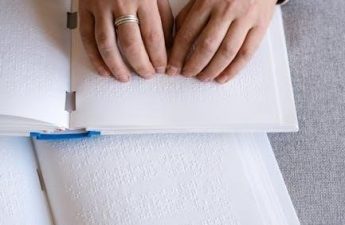Proper ring sizing ensures comfort, aesthetics, and security․ Whether for engagement rings, wedding bands, or fashion jewelry, accurate sizing is crucial for the perfect fit․ Ring sizing guides, printable charts, and DIY methods make it easy to determine your size at home, ensuring your jewelry looks and feels its best․
1․1 Importance of Proper Ring Fit
A proper ring fit is essential for both comfort and functionality․ A ring that is too tight may cause discomfort or restrict blood flow, while one that is too loose could slip off and be lost․ Ensuring the right fit guarantees the ring stays secure and enhances its aesthetic appeal․ Proper sizing also prevents potential damage to the ring itself․ Whether for everyday wear or special occasions, a well-fitted ring ensures a perfect balance of style, comfort, and practicality, making it a timeless and cherished possession․
1․2 Brief Overview of Ring Size Measurement Methods
Measuring ring size can be done using various methods, including printable charts, DIY ring sizers, or measuring an existing ring․ Printable charts allow you to compare your ring to standardized sizes, while DIY methods involve creating a simple tool at home․ For those with an existing well-fitting ring, measuring its diameter or circumference provides accurate results․ Advanced tools, such as ring diameter calculators, offer precise measurements․ These methods ensure you find the perfect fit for your jewelry, whether for everyday wear or special occasions like weddings or engagements․

Measuring Your Ring Size at Home
Measure your ring size at home using a printable chart, string, or existing ring․ Wrap a string around your finger, mark the length, and compare it to a chart․
2․1 Using a Printable Ring Size Chart
A printable ring size chart is a reliable tool for measuring your size at home․ Download and print the chart on standard paper, ensuring the scale is accurate․ Place an existing ring over the circles to find a snug fit․ If you don’t have a ring, wrap a string around your finger, mark the length, and compare it to the chart․ This method provides an accurate size, helping you choose the perfect fit for your new jewelry․
2․2 DIY Ring Sizer: How to Make Your Own
Create a DIY ring sizer using a strip of paper or string․ Wrap it around the base of your finger, marking where it overlaps․ Measure the length and compare it to a ring size chart․ For accuracy, ensure the paper is snug but not too tight․ This method is ideal when you don’t have a printable chart or an existing ring to measure․ It’s a simple, cost-effective way to determine your size at home, ensuring a perfect fit for your jewelry․
2․3 Measuring an Existing Ring
To measure an existing ring, place it on a printed ring size chart․ Ensure the rings inner edge aligns with the outer edge of a circle on the chart․ For accuracy, print the chart at 100% size and verify the alignment․ You can also use a ring diameter calculator by measuring the rings inner diameter with a ruler or caliper․ This method is quick and reliable, providing an accurate size without the need for additional tools or materials․
Understanding Ring Size Charts
Ring size charts are standardized tools that help determine the correct fit․ They typically include measurements in various international sizes, such as US, UK, or EU standards․ The charts often feature circles of differing diameters, allowing you to compare an existing ring or measure your finger․ To use them accurately, print the chart at 100% size and align the inner edge of the ring with the outer edge of a circle․ This method ensures a precise and reliable size determination for a comfortable fit․
3․1 Standard Ring Size Charts
Standard ring size charts provide a universal reference for determining accurate measurements․ They typically feature a series of circles representing different sizes, allowing you to compare an existing ring or measure your finger․ To use a chart, print it at 100% scale and place the ring over the circles until it fits snugly within one․ This method ensures precision and helps avoid resizing issues․ Many charts also include international size conversions, making them versatile for global shoppers․ Accurate alignment and proper scaling are key to achieving the best results․
3․2 International Ring Size Conversions
International ring size conversions are essential for global shoppers, as sizes vary across regions․ The US uses numerical sizes, while the UK and EU use alphabetic and metric systems, respectively․ Conversion charts help align these differences, ensuring accurate fits․ For example, a US size 6 often corresponds to an EU size 52 or a UK size L․ Understanding these conversions is crucial when purchasing jewelry internationally, as it prevents resizing hassles; Always refer to a reliable conversion guide to match your size accurately across different systems for a perfect fit every time․

Factors Affecting Ring Size
Ring size can be influenced by band width and temperature․ Wider bands may require a larger size, while temperature changes can cause fingers to swell or shrink slightly․
4․1 Ring Band Width and Its Impact on Fit
The width of a ring band significantly affects its fit․ Wider bands (e․g․, 1/4″ or broader) may require a half-size larger to ensure comfort, as they can feel tighter․ Narrower bands, such as slim wedding bands, typically fit true to size․ When measuring, consider the band’s width to avoid sizing errors․ For example, a ring with a tapered design may fit differently than a uniform band․ Always consult a size chart or seek a jeweler’s advice for precise sizing, especially for engagement rings or fashion jewelry․
4․2 Temperature and How It Affects Ring Size
Temperature changes can influence ring fit․ In warmer weather, fingers swell, possibly requiring a slightly larger size․ Conversely, in colder conditions, fingers shrink, allowing the ring to feel looser․ This natural fluctuation means sizing should ideally be done at a neutral temperature․ For engagement rings or wedding bands, consider the climate when measuring to ensure a comfortable fit year-round․ This factor is crucial for maintaining the perfect balance between style and comfort in your jewelry choice․

Choosing the Right Ring for Occasions
Selecting the right ring for an occasion ensures it complements the event and personal style․ Engagement rings prioritize fit and durability, while fashion rings offer trendy, versatile options․
5․1 Engagement Rings: Finding the Perfect Fit
Finding the perfect fit for an engagement ring is crucial for comfort and style․ Measure your ring size accurately using a printable chart or sizer․ Consider the band width, as wider bands may require a half size larger․ Try the ring at different times of day, as temperature affects fit․ Ensure the ring sits snugly but comfortably, allowing for resizing if needed․ This ensures your engagement ring is both beautiful and wearable every day․
5․2 Wedding Bands: Sizing Tips
Ensuring a perfect fit for your wedding band is essential for daily wear․ Use a printable ring size chart or sizer to measure accurately․ Consider the band width, as wider bands may require a half size larger․ Measure at different times of day, as temperature can affect fit․ Try the band on with your engagement ring if they’ll be worn together․ Opt for a snug but comfortable fit, allowing for resizing if needed․ Proper sizing ensures your wedding band remains a lasting, comfortable symbol of your commitment․
5․3 Fashion Rings: Stylish and Comfortable Options
Fashion rings blend style with comfort, making them perfect for everyday wear or special occasions․ Use a ring size chart to ensure a precise fit, as improper sizing can compromise comfort․ Consider the band width, as wider styles may require a half size larger․ Choose designs that complement your personal style, from minimalist to bold statement pieces․ Ensure the ring sits comfortably without restricting movement․ Regular resizing options allow your fashion ring to remain a perfect fit, ensuring it stays both stylish and wearable for years to come․
Advanced Ring Sizing Tools
Advanced tools like ring diameter calculators and smart rings offer precise sizing solutions․ These modern methods ensure accuracy and convenience, helping you find the perfect fit effortlessly․
6․1 Using a Ring Diameter Calculator
A ring diameter calculator is a precise tool for determining your ring size․ Simply measure the inner diameter of an existing ring using a ruler or caliper and input the measurement into the calculator․ It will convert the diameter to your corresponding ring size․ This method is ideal for those who prefer accuracy and convenience․ Many online jewelers offer free calculators, making it easy to find your perfect fit without guesswork․ This tool ensures that your ring size is accurate and reliable․
6․2 Smart Rings: Modern Sizing Solutions
Smart rings offer a futuristic approach to sizing, combining technology with convenience․ These devices use sensors to measure your finger’s circumference, providing precise size recommendations․ While innovative, smart rings can sometimes yield inaccurate readings due to varying finger sizes throughout the day․ For optimal accuracy, pair this method with traditional sizing tools like printable charts or existing rings․ This modern solution is perfect for tech-savvy individuals seeking a seamless sizing experience, though it’s wise to cross-verify results for the best fit․
Ring Care and Maintenance
Regular cleaning and proper storage are essential for maintaining your ring’s beauty․ Use mild soap and water to clean, and store separately to prevent scratching․ Proper care ensures longevity․
7․1 Cleaning and Storing Rings
To maintain your ring’s brilliance, clean it regularly with mild soap and warm water, using a soft cloth․ Avoid harsh chemicals or abrasive materials that may damage the metal or gemstones․ For storage, keep your ring in a separate compartment to prevent scratching․ Consider using a jewelry box or pouch for added protection․ Proper care ensures your ring remains in pristine condition, preserving its beauty and longevity․ Regular maintenance is key to enjoying your jewelry for years to come․
7․2 Resizing Options for Your Ring
If your ring no longer fits perfectly, resizing is a viable option․ Professional jewelers can resize rings by adjusting the band, ensuring a comfortable and secure fit․ The process typically involves cutting and re-shaping the metal, then soldering it back together․ Resizing is suitable for most metals, though certain materials like titanium may require special handling․ It’s important to consult a trusted jeweler to determine the best method for your specific ring․ Proper resizing ensures your jewelry remains both beautiful and functional for years to come․

Frequently Asked Questions
Common questions include avoiding measurement mistakes and ensuring accurate sizing for comfort and security․ Using a ring size chart or consulting a jeweler can provide precise results and peace of mind․
8․1 Common Mistakes in Measuring Ring Size
Common mistakes include measuring at the wrong time, as fingers can swell due to temperature or activity․ Not accounting for band width is another error, as wider rings may require a larger size․ Using an ill-fitting ring as a reference or printing charts without proper scaling can lead to inaccuracies․ Additionally, rushing the process or not double-checking measurements often results in poor fit; Avoid these errors by measuring calmly, using a well-fitting ring, and ensuring accurate scaling for the best results․
8․2 How to Choose the Right Jewelry Repair Service
Choosing the right jewelry repair service requires research and attention to detail․ Look for a service with a strong reputation, positive reviews, and expertise in handling various types of jewelry․ Ensure they have experience with ring resizing and repairs․ Request a detailed estimate and timeline for the work․ Opt for services that offer certified craftsmanship and guarantees․ Finally, ensure they use high-quality materials and maintain clear communication throughout the process for a satisfactory outcome․



